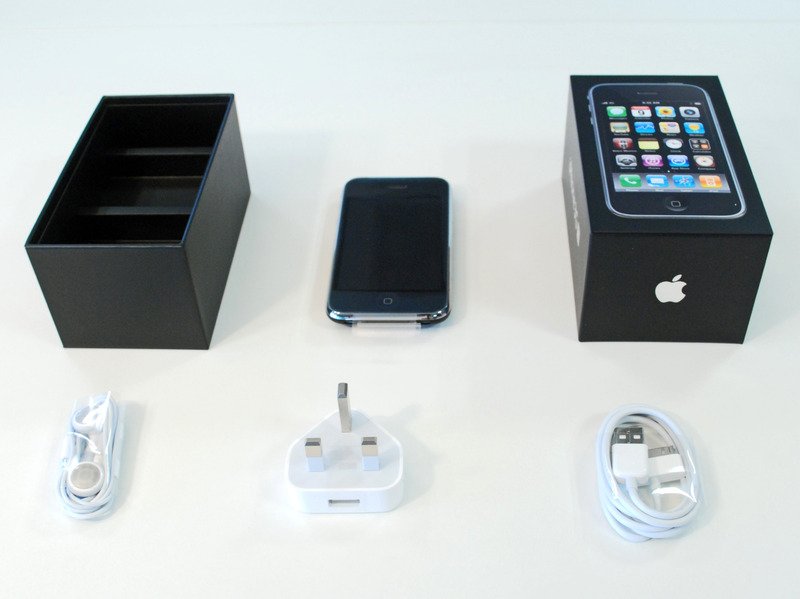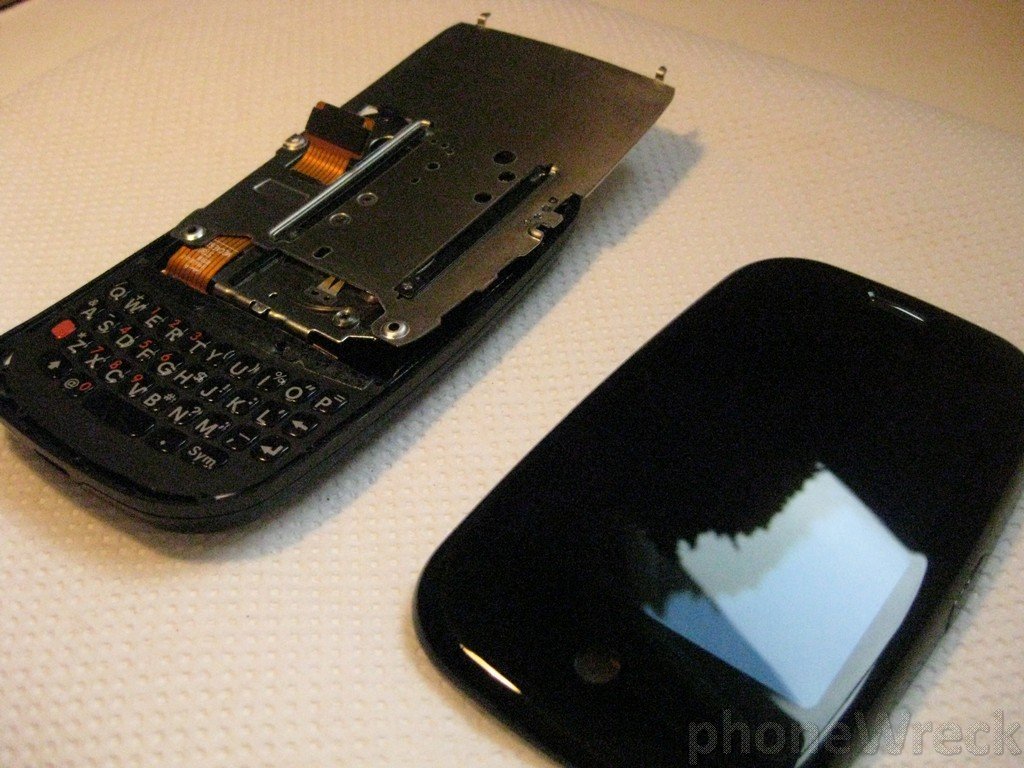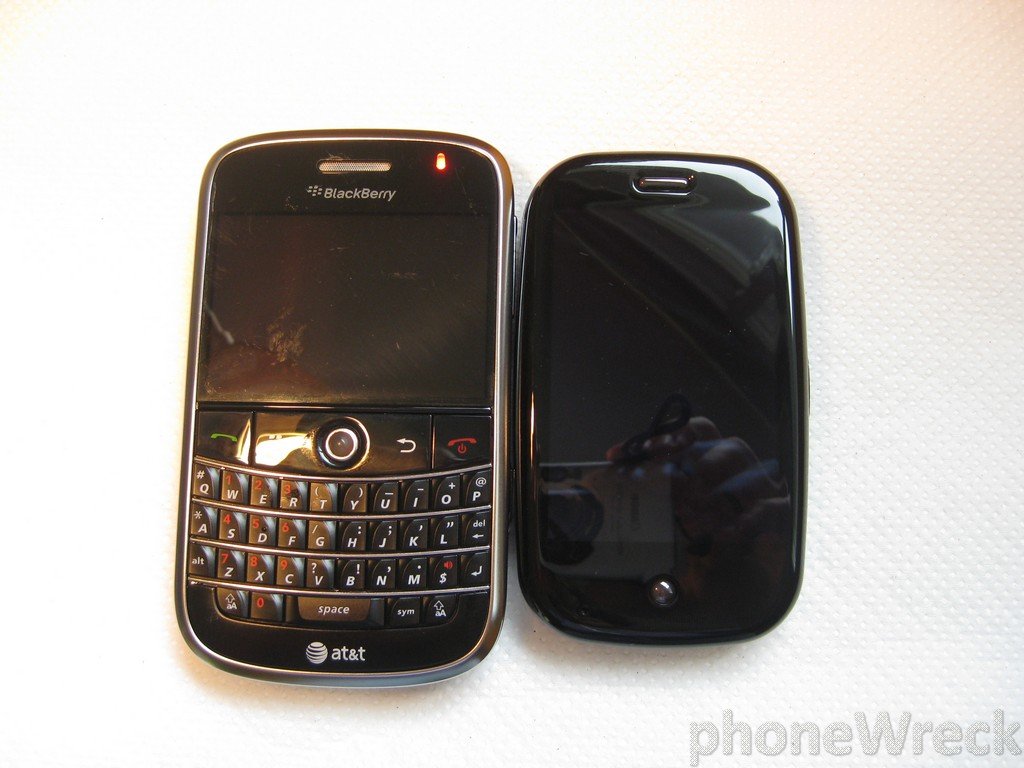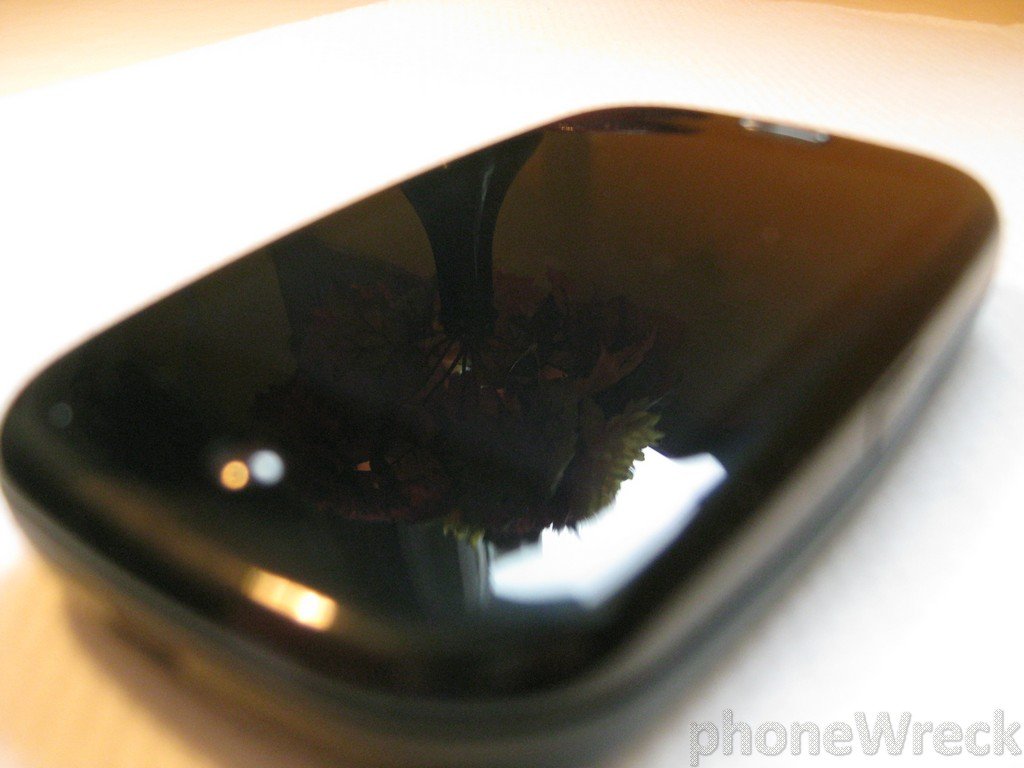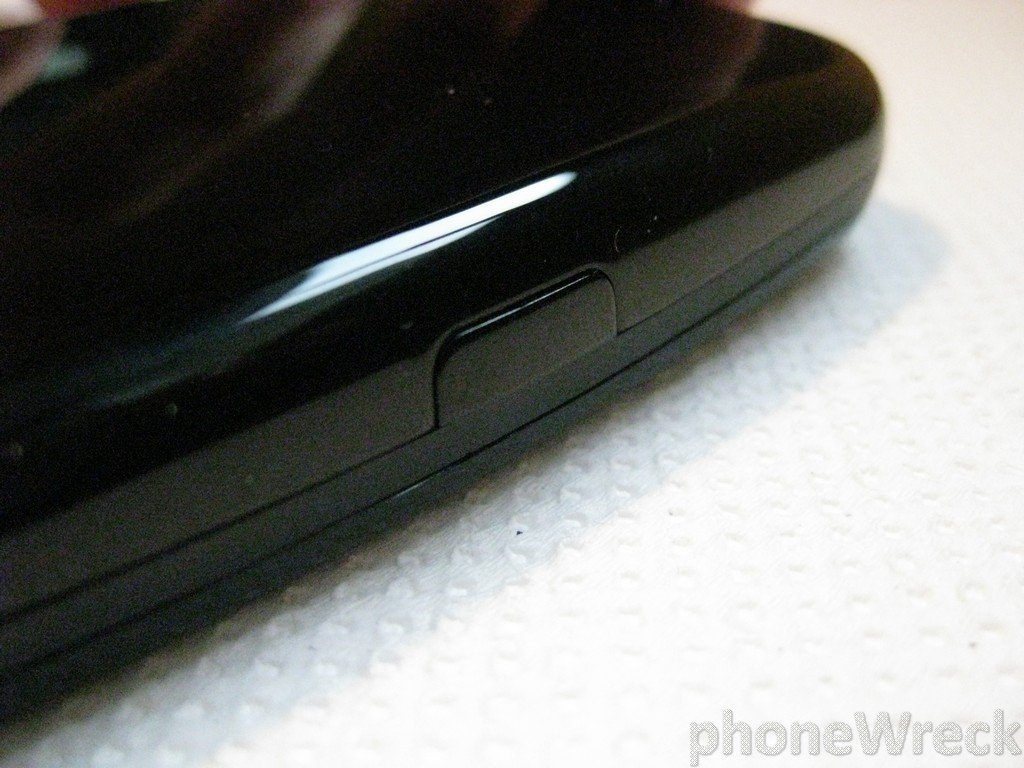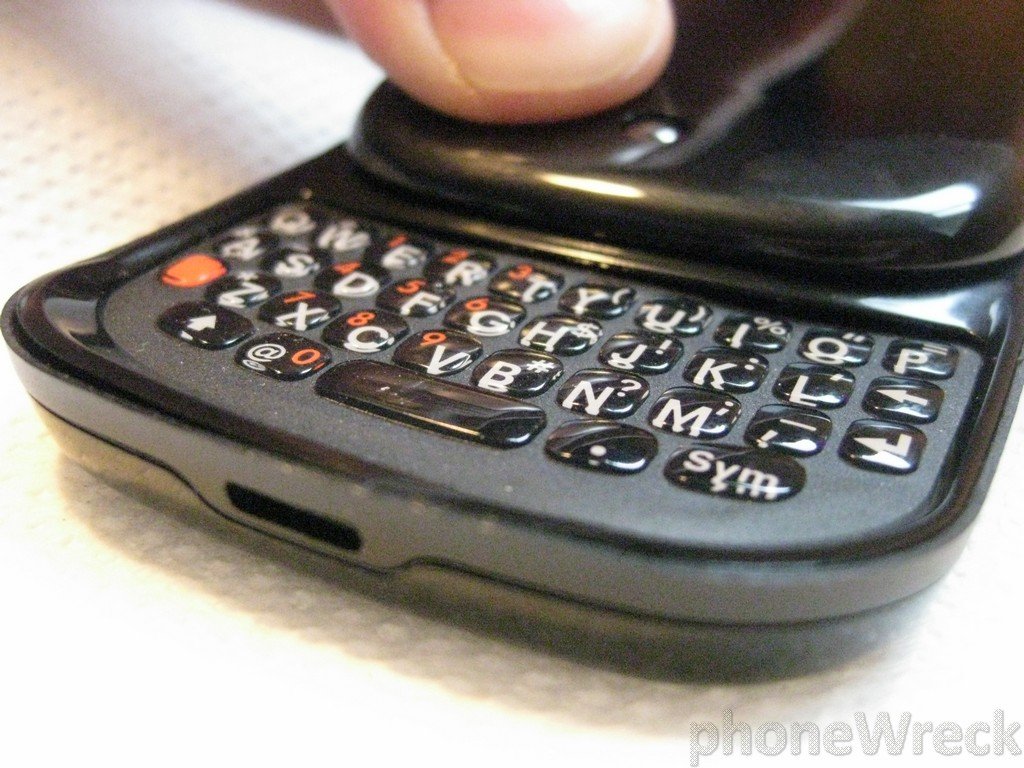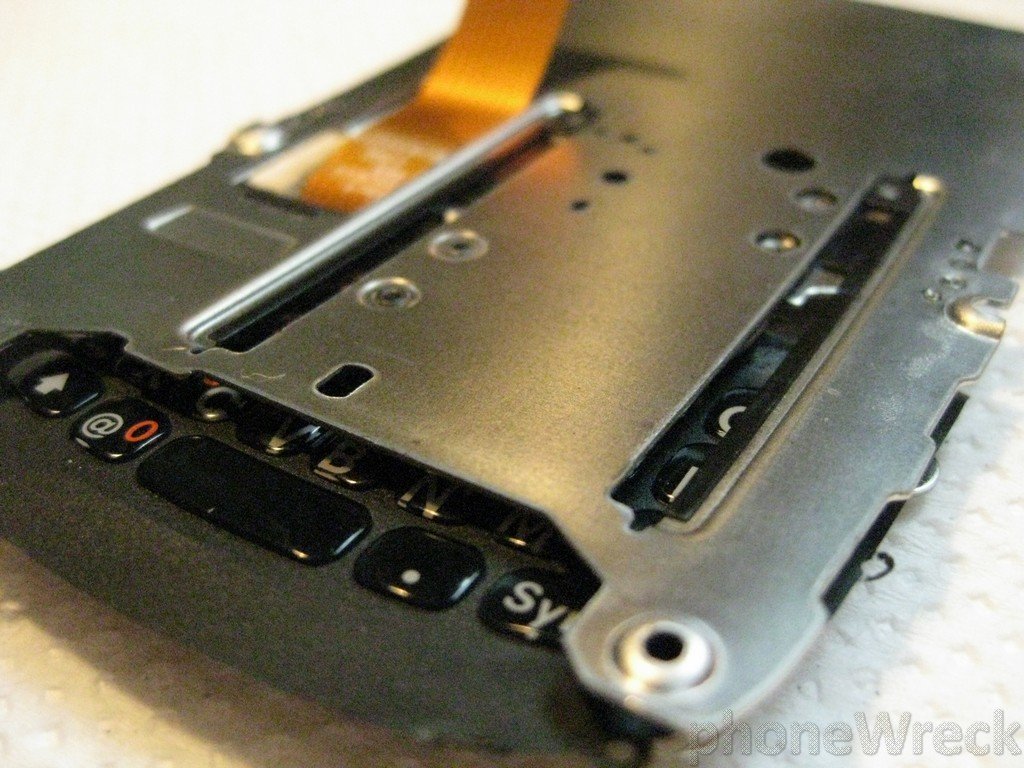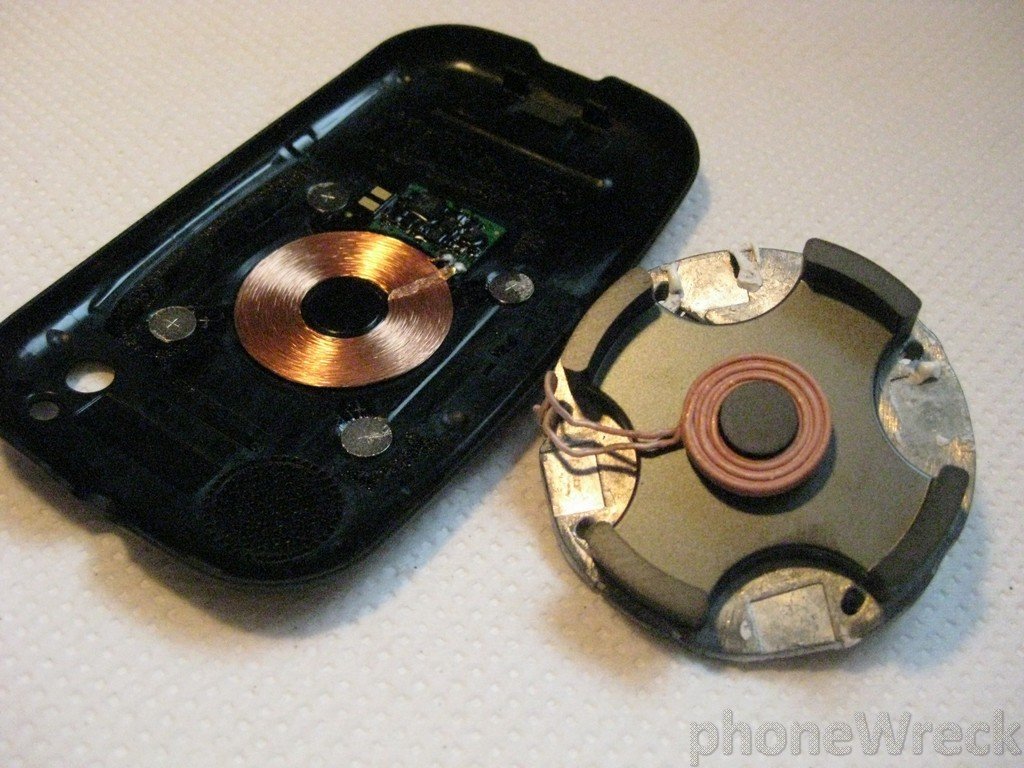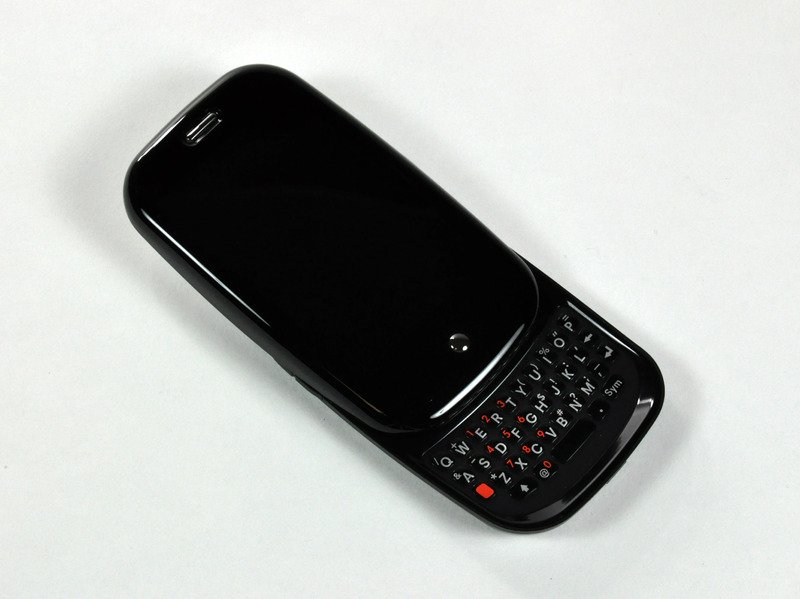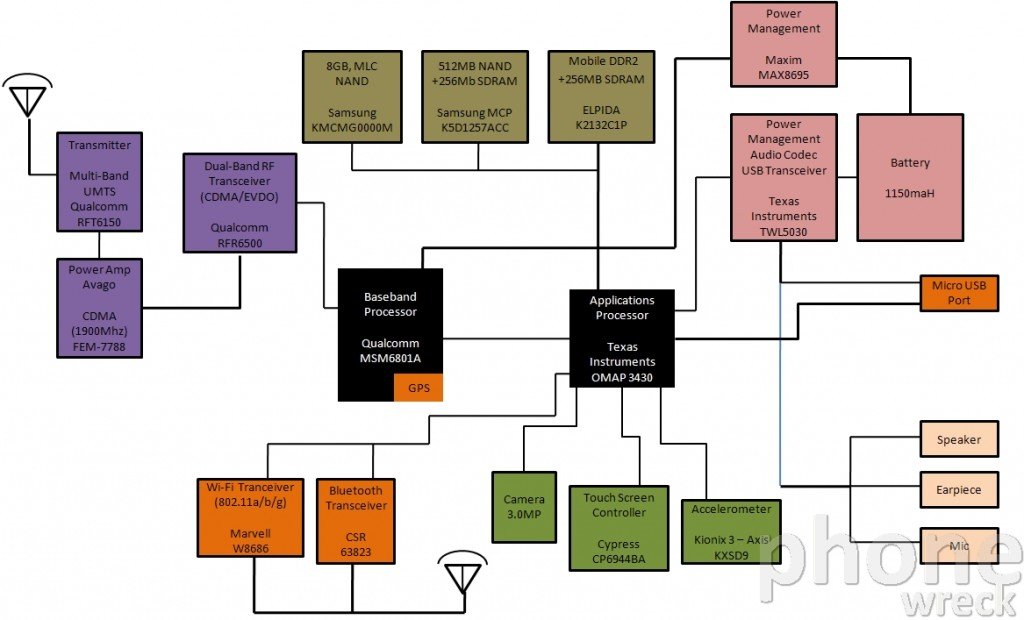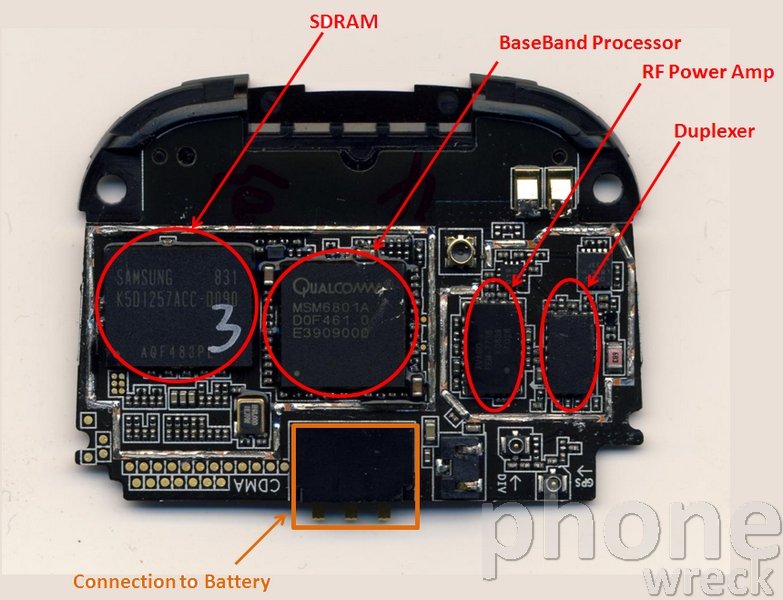|
||||||
|
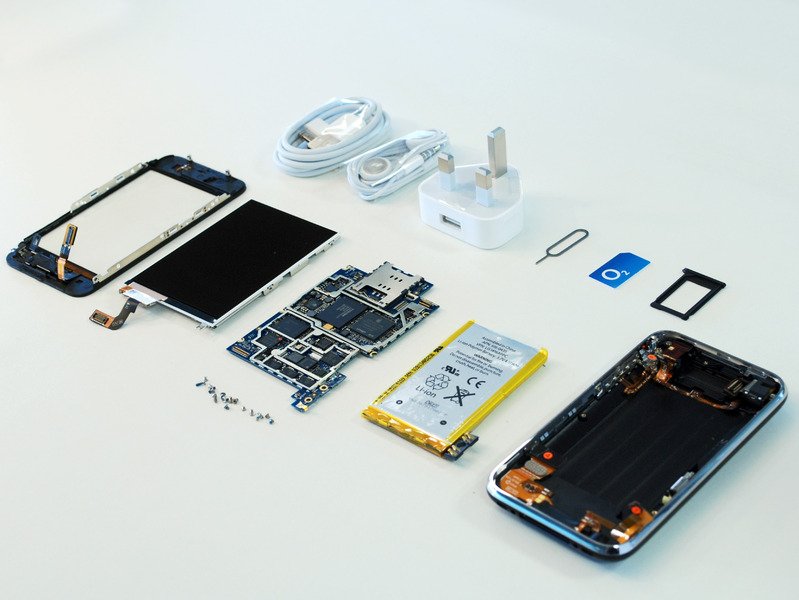 Explosion – courtesy of ifixit
Those Apple Engineer’s really know how to pack a PCB. They’ve managed to fit almost everything onto the “top” of the main logic board. The 3Gs’ PCB makes the 3G’s PCB look sparse.
Explosion – courtesy of ifixit
Those Apple Engineer’s really know how to pack a PCB. They’ve managed to fit almost everything onto the “top” of the main logic board. The 3Gs’ PCB makes the 3G’s PCB look sparse.
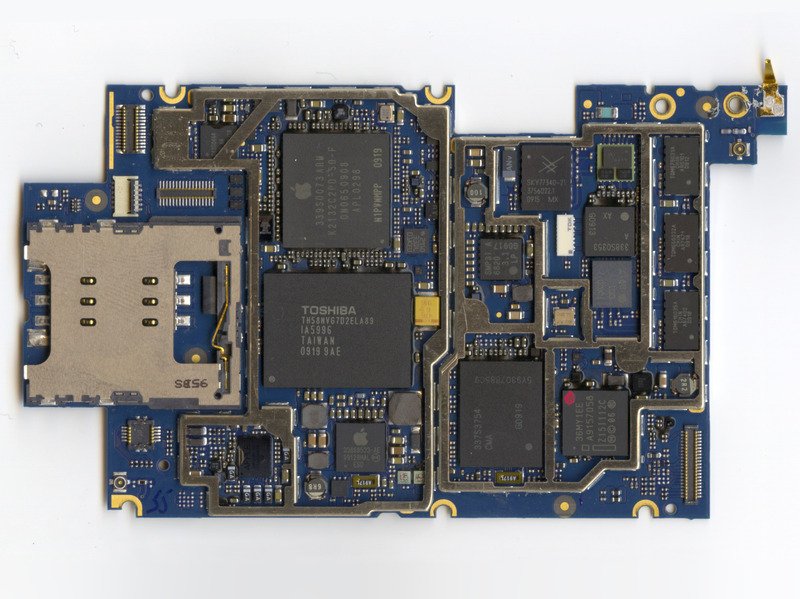 Let’s take a minute here to talk about the new Applications Processor Core. Apple has chosen to go from the ARM 11 Samsung S3C6400 to the ARM A8 Samsung S5PC100 with this device.
Let’s take a minute here to talk about the new Applications Processor Core. Apple has chosen to go from the ARM 11 Samsung S3C6400 to the ARM A8 Samsung S5PC100 with this device.
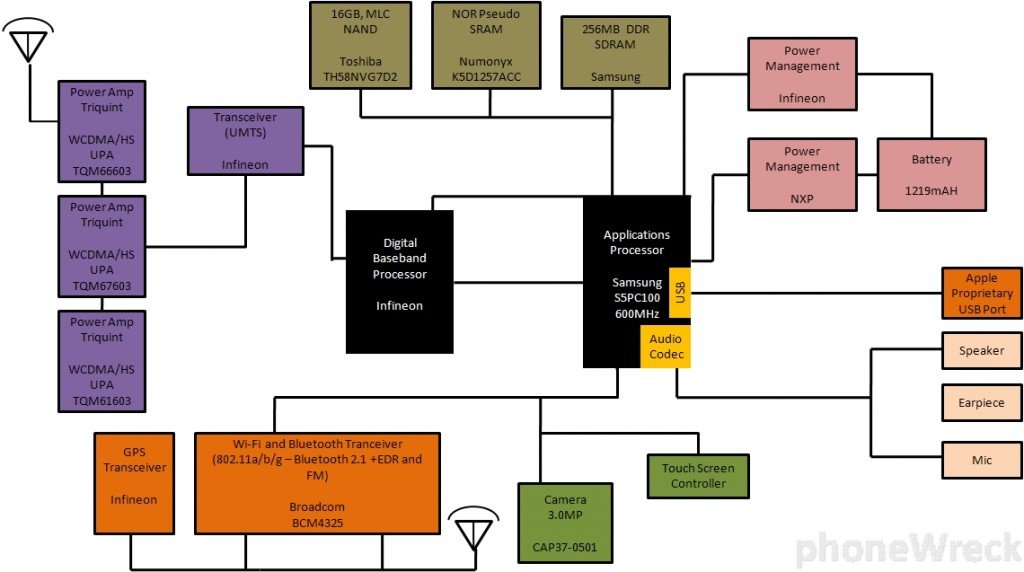 iPhone 3Gs Block Diagram – In Progress
This is the single largest difference between the 3G and the 3Gs. Firstly, the manufacturing process has been chopped from 90nm to 65nm. Pipeline depth has been boosted to 13 – stage from 8. More importantly, the clock speed of this newer processor rolls in at 600MHz – opposed to the 412MHz core of the old – obsolete 3G. Samsung has also doubled the quantity of L1 cache from 16 to 32KB.
None of this even takes the new PowerVR graphics core into consideration. Apple is clearly thinking along the lines of a gaming device for this puppy. The SGX is fully programmable – like the graphics card on your PC or mac. Expect some sweet gaming action in the near future.
@ 200MHz the SGX can pop 7M triangles/second and render 250M pixels/sec. That’s roughly 7 times the performance of the old, “obsolete” MBX.
It’s kind of like comparing your old 486 to a Pentium.
iPhone 3Gs Block Diagram – In Progress
This is the single largest difference between the 3G and the 3Gs. Firstly, the manufacturing process has been chopped from 90nm to 65nm. Pipeline depth has been boosted to 13 – stage from 8. More importantly, the clock speed of this newer processor rolls in at 600MHz – opposed to the 412MHz core of the old – obsolete 3G. Samsung has also doubled the quantity of L1 cache from 16 to 32KB.
None of this even takes the new PowerVR graphics core into consideration. Apple is clearly thinking along the lines of a gaming device for this puppy. The SGX is fully programmable – like the graphics card on your PC or mac. Expect some sweet gaming action in the near future.
@ 200MHz the SGX can pop 7M triangles/second and render 250M pixels/sec. That’s roughly 7 times the performance of the old, “obsolete” MBX.
It’s kind of like comparing your old 486 to a Pentium.
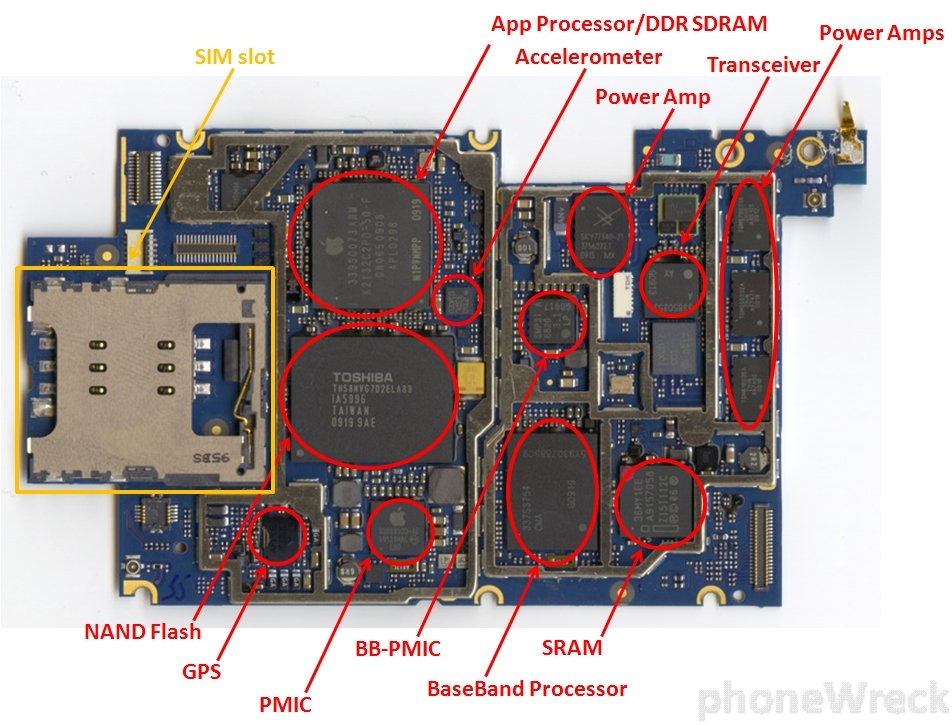 Moving around the rest of the PCB – it’s easy to notice the similarities with the previous 3G device. The Power Amp wins once again went to Triquint and Skyworks. We also see the NAND flash going to Toshiba – which as far as phoneWreck is concerned is fairly surprising. The battery has been bumped from the previous 1150mAH to 1219mAH – a much needed upgrade. Only time will tell if Apple’s claim of increased battery life will hold.
Once again the psuedo SRAM win goes to Numonyx. The BaseBand Processor appears to have similar markings to the previous 3G therefore we can assume it’s an Infineon. This has been paired with the Infineon PMIC. The Applications Processor mentioned Earlier (Samsung S5PC100) is paired with a PMIC courtesy of what appears to be NXP. It’s mounted with a DDR SDRAM coming in at 256MB.
True to form, Apple has re-branded some of the higher profile IC’s we’re very interested in. We’ll be performing some more thorough analysis further identify these. Make sure to follow Dr.Wreck’s twitter or subscribe to the RSS for updates!
Moving around the rest of the PCB – it’s easy to notice the similarities with the previous 3G device. The Power Amp wins once again went to Triquint and Skyworks. We also see the NAND flash going to Toshiba – which as far as phoneWreck is concerned is fairly surprising. The battery has been bumped from the previous 1150mAH to 1219mAH – a much needed upgrade. Only time will tell if Apple’s claim of increased battery life will hold.
Once again the psuedo SRAM win goes to Numonyx. The BaseBand Processor appears to have similar markings to the previous 3G therefore we can assume it’s an Infineon. This has been paired with the Infineon PMIC. The Applications Processor mentioned Earlier (Samsung S5PC100) is paired with a PMIC courtesy of what appears to be NXP. It’s mounted with a DDR SDRAM coming in at 256MB.
True to form, Apple has re-branded some of the higher profile IC’s we’re very interested in. We’ll be performing some more thorough analysis further identify these. Make sure to follow Dr.Wreck’s twitter or subscribe to the RSS for updates!
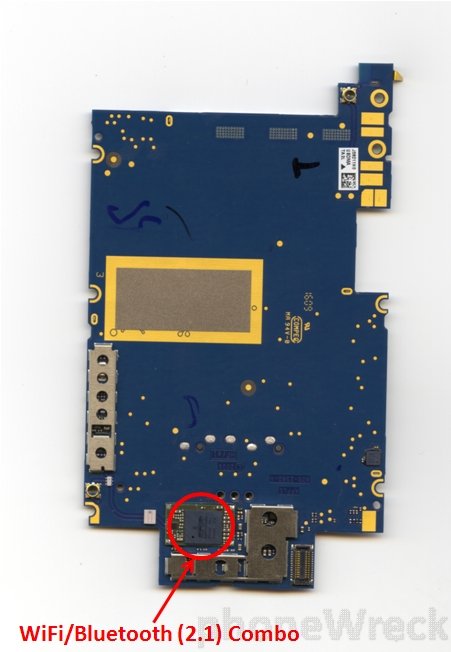 Underneath the logic board we have a little surprise! A new combo chip from Broadcom (BCM4325) This puppy packs 802.11a/b/g and Bluetooth 2.1 (+EDR and FM). This is a fairly substantial change from the Marvel and CSR combo on the old – obsolete 3G.
We’ve received some rumours and speculation about the other devices we weren’t able to ID. There is a guess from a few readers that the GPS chip may be the same as on the previous 3G – the Infinieon Hammerhead II. This may be true but the new package is a different size – this means that it could incorporate the compass hardware as well.
That said, we’ve had some rumours that the compass chip is the Asahi Kasei – AK8973. We’ll still have to do some more digging!
Underneath the logic board we have a little surprise! A new combo chip from Broadcom (BCM4325) This puppy packs 802.11a/b/g and Bluetooth 2.1 (+EDR and FM). This is a fairly substantial change from the Marvel and CSR combo on the old – obsolete 3G.
We’ve received some rumours and speculation about the other devices we weren’t able to ID. There is a guess from a few readers that the GPS chip may be the same as on the previous 3G – the Infinieon Hammerhead II. This may be true but the new package is a different size – this means that it could incorporate the compass hardware as well.
That said, we’ve had some rumours that the compass chip is the Asahi Kasei – AK8973. We’ll still have to do some more digging!
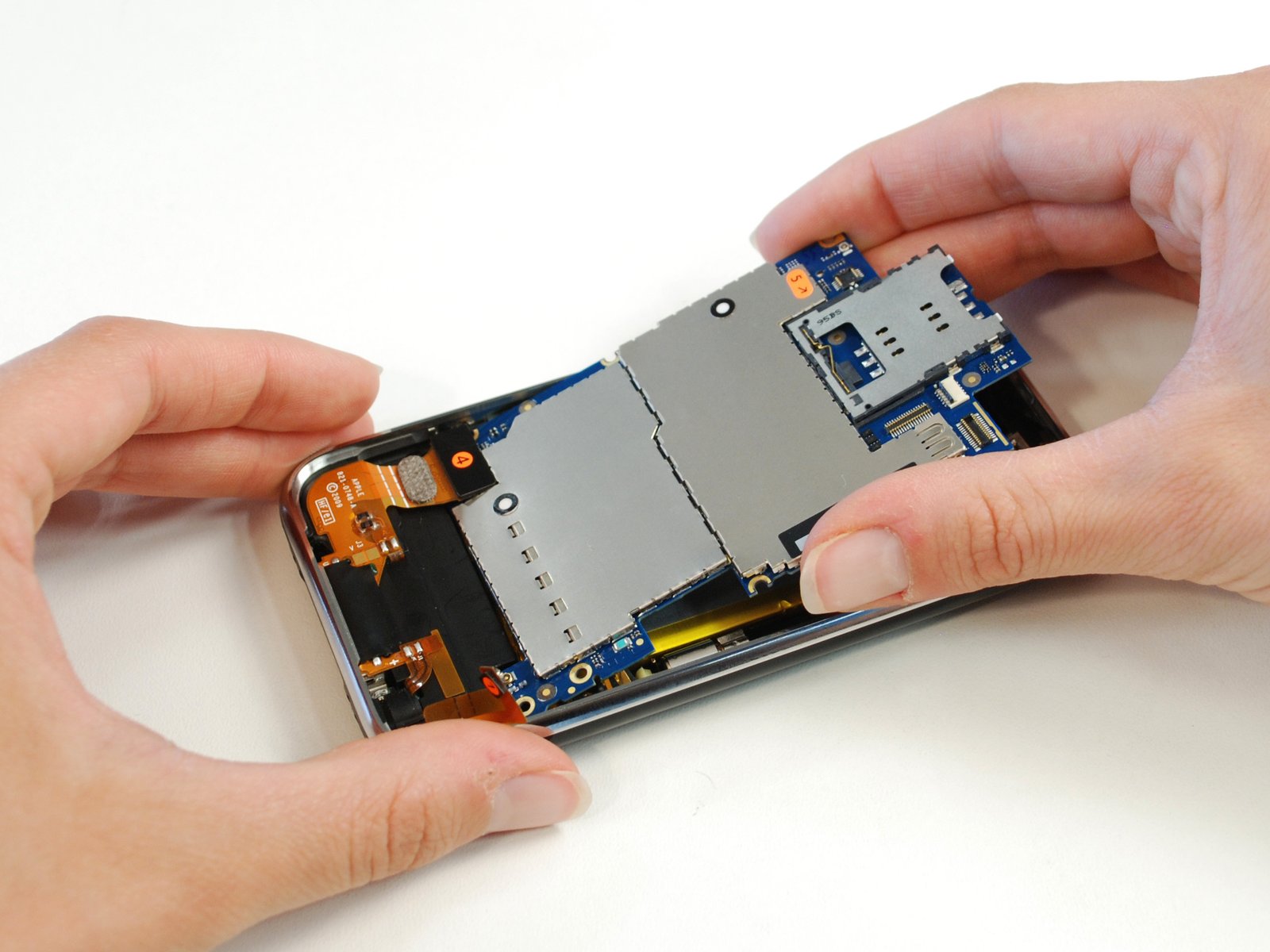 We’re currently in the process of performing a much more thorough analysis. Keep checking back for more details as they come – we’ll most likely be putting this device through its paces to see how it stacks up with the Palm Pre and BlackBerry Bold & Storm.
Thanks again to the wonderful people at ifixit for gracing us with these great photos! If you want to see how it’s taken apart, make sure to check out their teardown.
Stay tuned and keep wrecking!
We’re currently in the process of performing a much more thorough analysis. Keep checking back for more details as they come – we’ll most likely be putting this device through its paces to see how it stacks up with the Palm Pre and BlackBerry Bold & Storm.
Thanks again to the wonderful people at ifixit for gracing us with these great photos! If you want to see how it’s taken apart, make sure to check out their teardown.
Stay tuned and keep wrecking!
Smudge Magnet One thing we’re used to seeing as of late is the faux/real metal border surrounding the device. This is a ploy often used by ODM’s to make the device look smaller in your hand. Fortunately for Palm, this device is already quite small – this might reduce the device’s resistance to drops and scratches though. Cosmetically speaking, the all-black look is definitely attractive and leaves the door open to many future color options which we’re sure we’ll soon see. Moving around the edge of the device, things are once again kept very simple – there is only one flap, the one that exists for the microUSB port. It is flat and flush with the body – a very surprising and clever design move for Palm.That door is flush. Of course, there is no external (or internal) slot for removable storage. This thing comes packed with 8GB of internal memory – which as any iPhone user knows, isn’t a whole lot. At least we got a removable battery, right? Dr. Wreck is calling future versions with 16-32GB of internal storage – mark his words. Keyboard/Sliding MechanismThe Palm keyboard we’re so used to seeing On the outward, this device doesn’t feel like it has a keyboard – it’s so small and fits so nicely in our hands! In reality, it probably feels like this as the keyboard is fairly small and, shall we say… flimsy. The sliding mechanism feels solid although not as smooth as the Xperia’s which we previously took apart. The keyboard is the same as previous Palm devices – small and hard to press with anything but your nails. Dr. Wreck has some massive thumbs and as such found it difficult to hit the buttons. Moreover, the space between the top keys and the device is fairly small… stay tuned for some speed typing benchmarking.Dr. Wreck has some massive thumbs As we started taking it apart, we revealed the sliding mechanism. We also peeled the keyboard off (turns out the keys are just a sticker with gelled buttons).The leaf spring Looking closer at the sliding mechanism, we can see there are two tracks. The entire device has a slight curve which allows the keyboard to slide out and toward the user – a very cool and useful feature. There is a small leaf spring which helps pop the keypad into place but is not too loose or too resistive. That said, Dr. Wreck is also abnormally strong… which is also probably why he didn’t experience any binding.The two tracks (phone is in closed position) Back Cover/Touchstone Charging Kit The back cover is surprisingly easy to remove – although with no removable storage or SIM card, there is very little reason to remove it – unless of course you got yourself the Touchstone Charging Kit. If you purchased the kit, you need to put the new back cover on. At this point, Dr. Wreck wanted to give a science lesson on inductive coupling. We figured that might be a little bit boring and decided to forgo it. That said, it charges the same way as your electric toothbrush and isn’t really that ground-breaking – unless of course you consider this as the first time it’s been implemented on a mobile phone.Touchstone Charger and Touchstone Cover It’s worth mentioning that the touchstone cover has a matte finish while the original cover is glossy. The glossy cover looks nice but is slippery and susceptible to smudges and scratches. We prefer the matte touchstone cover. Conclusion In conclusion, this phone is fairly well built and very well designed. If you’re a Sprint customer looking for an upgrade, without a doubt this is the phone to choose. If you’re thinking of switching carriers to get this phone we suggest you try before you buy. First Impressions: 9 Build Quality: 8 Estimate on Durability: 5 Keypad/Interface devices: 7 That’s it that’s all! In the meantime, Keep WRECKING!If you haven’t had a chance yet, make sure to check out our Sprint Palm Pre design analysis! Check out the UI Review! Note: Most images are courtesy of www.ifixit.com Here it is, the phone we’ve been ramping up for since it was first unveiled earlier this year. This puppy has been touted by many as the venerable iPhone killer. Here at phonewreck, we’ll be taking this thing through its paces over the weekend and the next few days in order to give you, our readers, a proper review that includes benchmarks for all of the functions this device can perform. Make sure and keep it locked on www.phonewreck.com as we continue to put our Palm Pre from Sprint under the wrecking ball. Fortunately for you guys, we had a chance to work with the gentlemen/women over at ifixit to get some high quality images of the PCB. These people really have their stuff together and resorted at nothing to be the first with a fully documented teardown of both the pre and the pre touchstone charger. Anyways, enough rambling from us – we know why you guys are here. Time to get our hands dirty and see what makes the pre hummmmmmmmm. Oh and don’t forget to subscribe to the RSS to keep posted as the updates come! There are some pretty interesting things that popped up on the Pre’s PCB’s. This is the first production device we’ve seen on the OMAP3 (Open Media Applications Processor) platform. OMAP3 is powered by the 600MHZ ARM Cortex A8, PowerVR SGX 530 (GPU), 430MHz C64x, DSP and ISP (Image Signal Processor) and was clearly designed to pack a punch – Dr. Wreck thinks we’re going to see this processor popping up in future netbook endeavors. On the connections side we see the usual wifi/bluetooth combo going to Marvell and CSR with the W8686 and 63823 respectively. We also see the BaseBand win going to Qualcomm with the heavily integrated MSM6801A platform. The OMAP3 PMIC comes loaded with a USB transceiver and Audio codec which even further reduces the overall board density of this device. We’re not fully sure – but it looks as if the Pre’s cool new multi-touch Touch Screen Controller win went to Cypress Semiconductor with the CP6944BA device. The device packs a 1150mAh battery – just like the iPhone 3G. More Info after the Break! On the top of the communications board we can spot the BaseBand Processor (Qualcomm MSM6801A), SDRAM, RF power amp and Duplexer by TriQuint. On the bottom of the communications board we can spot the BaseBand PMIC (Maxim MAX8695Q), RF Transmitter (RFT6150) and the RF Transceiver (RFR6500) both by Qualcomm. On the main logic board, we see the OMAP3 PMIC – the Texas Instruments TWL5030. As mentioned before, this PMIC is packed with a USB Transceiver as well as Audio Codec. We also see the Bluetooth and Wifi Transceivers with the earlier discussed wins from both Marvell and CSR. This device contains a microUSB port and 8GB of internal memory from Samsung. Elpida offers up some mobile DDR memory and is stacked on top of the venerable OMAP3 processor. We’ll have to wait and see how this thing benchmarks. And there you have it! Thanks again to ifixit for the wonderful teardown scans and images. Make sure and pop over there if you want to see how they took it apart! Keep posted as we plan on continually releasing Palm Pre content over the next week! |
||||||
|
Copyright © 2010 phoneWreck - All Rights Reserved |
||||||

